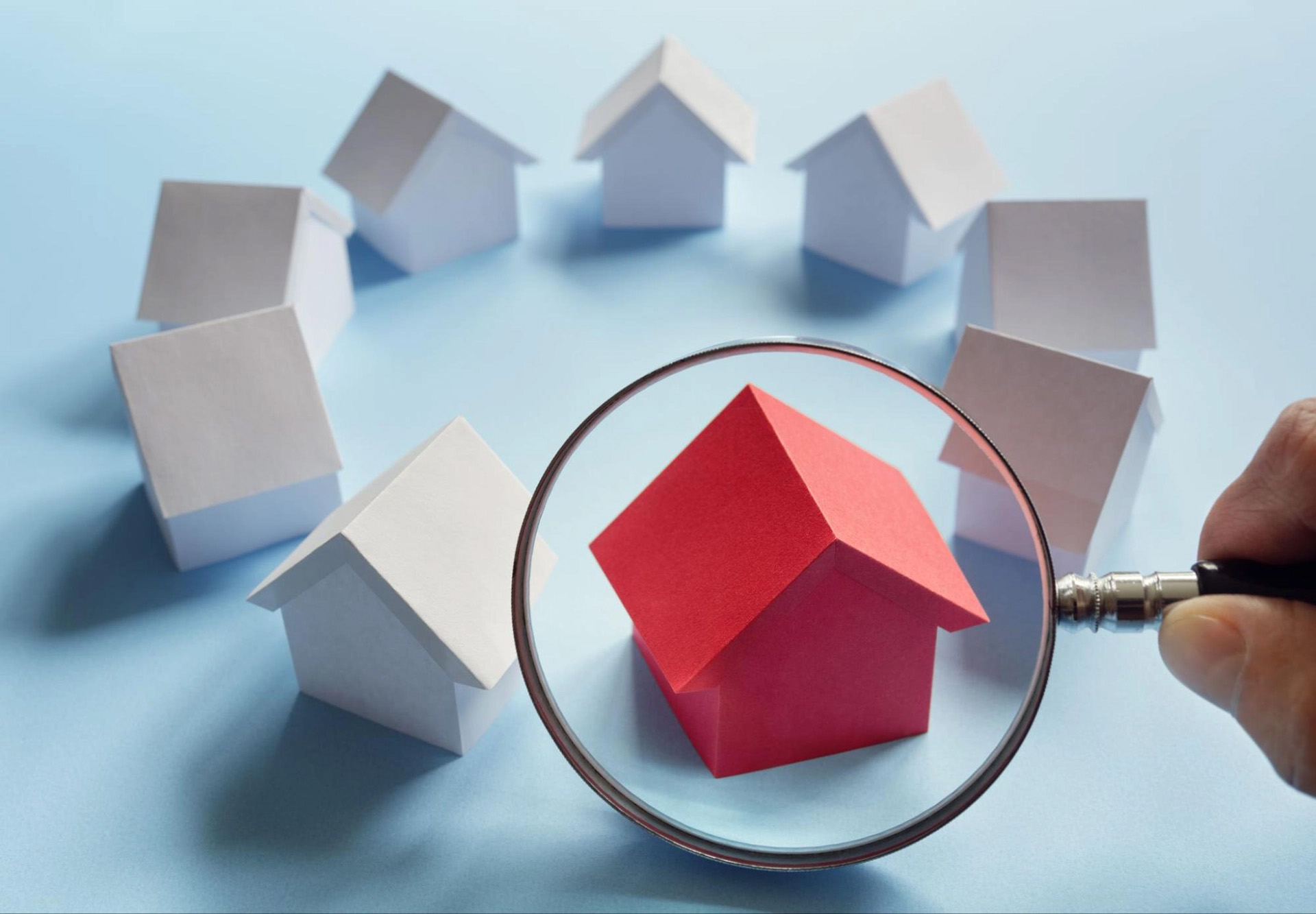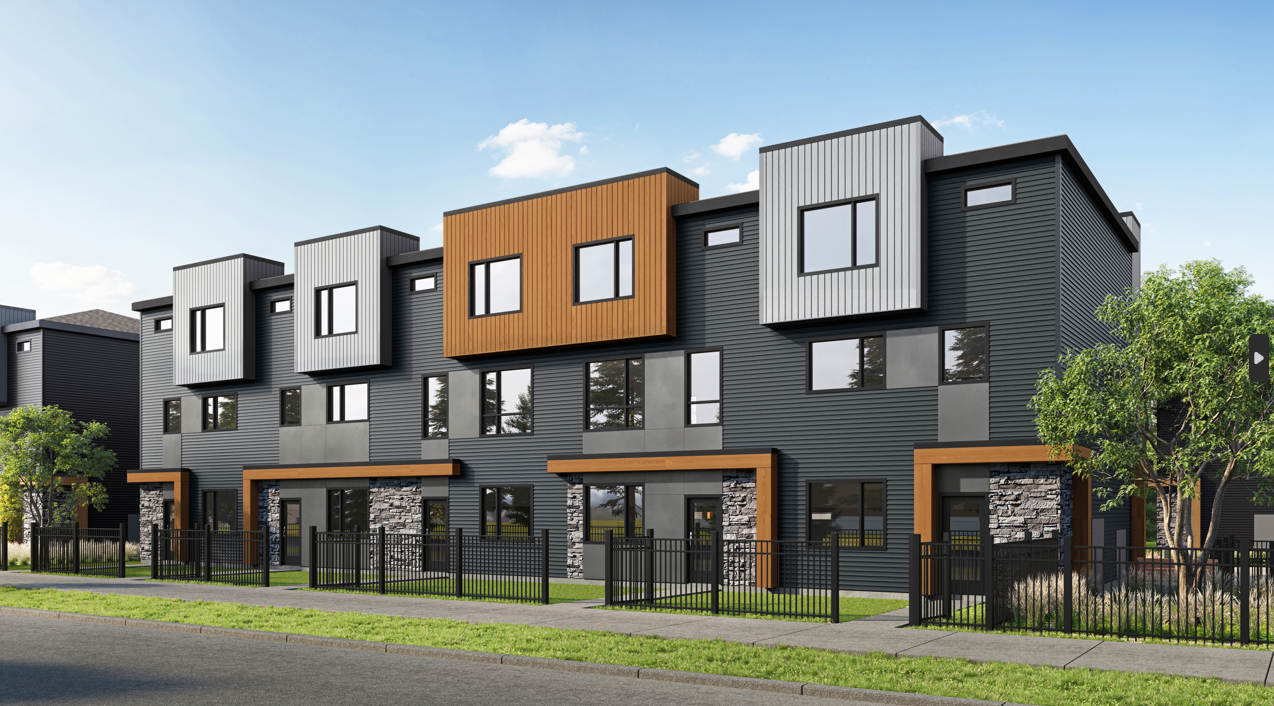If you’re a first-time home buyer looking to make a move in the thriving Calgary real estate market, this article is for you.
Although the journey to homeownership is exciting, the process can feel overwhelming.
From knowing when to go to your bank, understanding mortgage default insurance, and learning what your debt-to-income ratio is to choosing ONE house to call home, the entire process can seem daunting.
But don’t worry.
This article is here to be your guide, breaking down six manageable steps on how to buy a house in Calgary so you can make your home-buying experience enjoyable while making informed decisions!
Please note that the buying process is a bit different depending on whether you buy an older home or build a new home. This blog post outlines the steps that often occur with both processes.
1. Save Up for a Down Payment

The first step to buying a home is saving up for your down payment, which is typically between 5-20% of the total home’s purchase price.
For example, the average price of a home in Calgary, Alberta, is $569,361 as of January 2024. If you were to purchase a home at that price, based on the percentage you put down, your down payment would be:
- 5% = $28,468.05
- 10% = $56,936.10
- 15% = $85,404.15
- 20% = $113,872.20 (all homes over $1,000,000 must have a down payment of 20%.)
Please note that if you are putting less than 20% down, you will need mortgage loan insurance. This insurance protects lenders if you can’t make your payment.
If you’re a first-time homebuyer, you can benefit from the First Home Savings Account (FHSA). The FHSA is a registered plan that allows you to save for your first home by making contributions that can grow through investment and then withdraw these funds tax-free when you’re ready to purchase your home.
2. Head to the Bank and Get Mortgage Pre-Approval
Now that you have enough money saved for a down payment, you can head to the bank to see what you qualify for and try to get a mortgage pre-approval.
It’s important to get pre-approval before looking for a home because:
- It gives you a better line of sight into what monthly payments you can afford.
- It ensures you can pass the mortgage stress test.
- It can expedite the closing process once you find a home, as much of the initial paperwork is already completed.
- If you’re buying a used home, sellers will often only consider offers from buyers with pre-approval.
- You can learn the going interest rate (note that interest rates rise and lower over time, so it will likely be a bit different when you get final approval). You can work with a bank or mortgage broker to find you the best rate.
*Please note that pre-approval is a pre-qualification, so you will still need to get final approval when you purchase your desired home.
When you have your appointment with the bank, there are a few key components your lender will analyze to see how suitable you are to purchase a home.
Income
Your lender will want to review your financial situation and ensure you have a steady and reliable income, proving you can pay off your mortgage loan. They will likely require you to send them current pay stubs or T4s from years prior to ensure your income is accurate.
The Canada Mortgage and Housing Corporation (CMHC) recommends your monthly housing costs be less than 32% of your gross monthly income. These housing costs include bills such as your monthly mortgage payment, utilities, insurance, and property taxes.
It’s important to note that your income is not only from your day-to-day job but also includes stocks or investments, such as income from a TFSA.
Credit Score
When you try to get a mortgage pre-approval, your lender will run a credit report. This report will analyze things like your credit history, score, and utilization. In general, a credit score of 650 is needed to move forward with pre-approval. If your credit score is below this amount, there are three key “rules” to follow to get back on track for affording a new home:
- Ensure that you pay your bills on time
- Keep your credit utilization ratio below 30%
- Pay any debt you currently have
Having a good credit score is a key requirement for all aspiring home buyers, so keep your credit in check before looking to purchase a new home.
Debt-to-Income Ratio
Debt-to-income ratio is the percentage of your monthly income (before income taxes) that goes towards paying your debts. These debts include:
- Mortgage payments
- Credit cards
- Lines of credit
- Car loans, personal loans, etc.
Typically, it’s required that you have a debt-to-income ratio of less than 42%. This price can fluctuate based on your home type, total purchase price, and mortgage broker/lender. If you’re just starting to think about purchasing a home, consider how you can lower your debts before trying to get approved.
3. Find Your Dream Home

Here comes the exciting step: the home search!
Now that you know your pre-approval amount, you can go out and look for a home.
During this process, we strongly recommend taking the time to outline your desires and necessities in a home.
Is a garage non-negotiable? Perhaps a walk-in closet or an outdoor space for your furry friend tops your list. Knowing what you genuinely want in a home is important, especially considering that home ownership is a long-term investment, and ensuring you love the space is crucial.
Additionally, it’s important to know which area of Calgary you want to live in. Are you keen on an older neighbourhood with large trees or a brand-new community with more growth potential?
If you’re interested in buying an older home in an older neighbourhood, you can connect with real estate professionals who will send you online listings that meet your criteria. Some popular developed neighbourhoods based on the city quadrant in Calgary include:
- Northwest: Kensington, Edgemont, Brentwood
- Northeast: Bridgeland, Saddle Ridge, Sunridge
- Southwest: Evergreen, Woodbine, Oakridge
- Southeast: Lake Bonavista, Acadia, Quarry Park
If you’re interested in purchasing a new home, check out some local showhomes in your desired Calgary community. Some of the new communities in Calgary include:
- Northwest: Ambleton, Glacier Ridge
- Northeast: Cornerstone, Cornerbrook
- Southwest: Aspen Spring Estates, Belmont, Creekview, Pine Creek, Sirocco, Vermilion Hill
- Southeast: Legacy, Wolf Willow
Once you find your dream home, it’s time to finalize the deal!
4. Finalize the Deal & Pay Closing Costs
The next step in your home-buying journey is to finalize all the documentation and ensure you, your lender, lawyer, and the home seller are all in agreement. We’ve broken down a few of these final steps for you below.
1. Pay the Downpayment
If you’re purchasing a new build home, you may have to provide the builder with your down payment either when you first sign or make various payments at different times in the building process. This situation can differ depending on the builder, but your Area Manager will cover this process with you.
If you’re buying an older home, your downpayment will be due at the time of closing, like when you meet with your lawyer.
2. Get Mortgage Approval
After paying the downpayment, you will need to head back to the bank and get a final mortgage approval. You may be able to simply email your lender rather than book an appointment to get approved. Your lender will ask for additional documentation such as:
- House Insurance Certificate (you will have to get insurance from your insurance company)
- Possession letter
- Statement of Adjustment
- Any additional income documents (T4s/pay stubs)
Additionally, your mortgage professional will give you your set interest rate so you can calculate the exact cost of your mortgage.
3. Meet With a Lawyer
Once the bank approves you, you must find a lawyer to help you make your real estate transaction. They will create a contract that solidifies that the bank is purchasing the home from the builder, and you are borrowing the money and paying it back over a set period.
You can expect lawyer fees to be no more than a few thousand dollars.
One major perk of building with Shane Homes is that we will cover your lawyer fees, given you use a Shane-appointed lawyer. Think of this incentive as a thank-you for choosing Shane Homes as your builder!
4. Move into Your Dream Home
Congrats on buying a home and entering the Canadian real estate market!
After going through the entire home-buying process, you can finally move into your dream home.
If you build with Shane Homes, we will make your moving process much easier by connecting you with a concierge who will help you get your mail keys, garbage and recycling bins, as well as set up your utilities, Wi-Fi, and much more!
Build Your Dream Home from Shane Homes

When you’re ready to purchase your first home, visit Shane Homes.
At Shane Homes, we’re dedicated to assisting you throughout your entire home-buying process. From the moment you step into one of our showhomes to the day we hand you your keys, we will be with you to ensure your home ownership journey is seamless and enjoyable.
Take a look at our gorgeous home models in brand-new communities throughout Calgary and Airdrie, then use our build and price tool to start pricing your home.
Ready to have a stress-free experience building the home you’ve always wanted? Contact us!


















